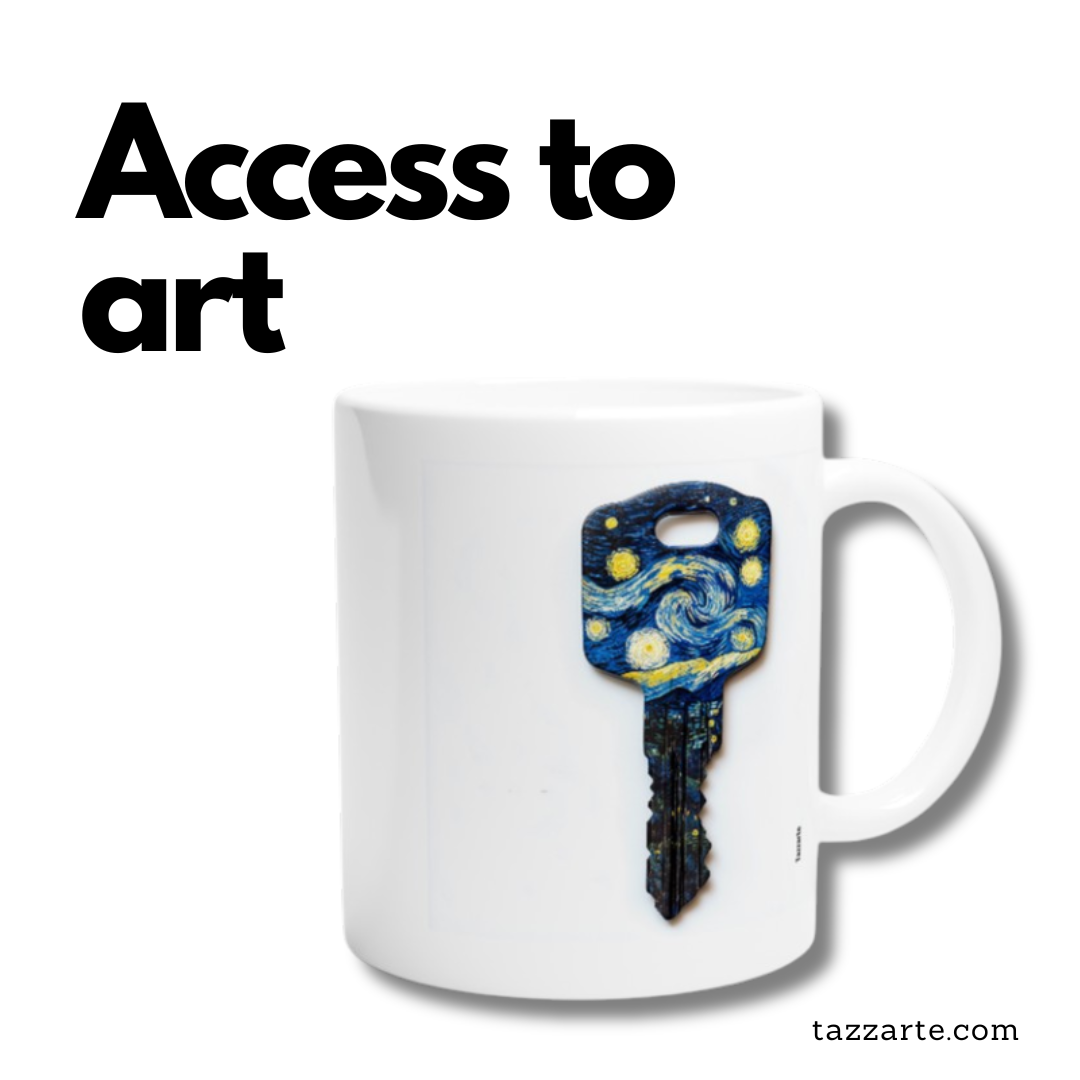
Art Reproductions and the Cultured Class: Taste Formation, Knowledge Transfer, and Reception
Share

© tazzarte.com
A Historian’s Invitation
Where Art History Meets Everyday Life
As an art historian deeply engaged with the societal role of art, I invite you to explore our online shop, tazzarte.com. Here, art history is revitalized through contemporary craftsmanship. The keys we offer, adorned with carefully reproduced artworks, are more than aesthetic objects. They are instruments for cultivating taste and understanding cultural heritage in the 21st century.
A Class Defined by Taste
How the 19th-Century Bildungsbürgertum Used Art to Educate Itself
The 19th century saw the emergence of the Bildungsbürgertum—a class characterized by education, cultural ambition, and refined taste. For this class, art reproductions were essential:
-
Taste Formation: Reproductions allowed the educated middle class to engage with the great masters without owning originals. They were tools of aesthetic refinement, embodying the ideals of their time.
-
Knowledge Transfer: In salons, private homes, and educational institutions, reproductions served as teaching aids—facilitating the study of styles, schools, and historical narratives central to bourgeois cultural identity.
-
Reception and Discourse: The way art was received and interpreted through reproductions helped shape public opinion and established a broader cultural literacy.
The Three Roles of Reproductions
Taste, Teaching, and Democratization of Art
The impact of reproductions extended far beyond decoration. They brought art into everyday life, democratized access to visual culture, and enabled a wide audience to participate in the aesthetic conversations of their time.
Reproducing Meaning Today
Why Art Reproductions Still Matter—Even on a Key
In the present day, reproductions continue to serve an essential purpose:
-
Intellectual Stimulation: Our keys are not merely functional. Each piece represents a curated encounter with art history—transforming an everyday object into a bearer of knowledge and meaning.
-
Historical Context: Every product includes a short art historical excursion. The source of each motif is clearly cited, giving users both visual pleasure and scholarly depth.
-
Curated Selection: Each artwork is personally chosen to reflect the intellectual and aesthetic values that define Tazzarte. This is not mass design, but cultivated curation.
Designed for Reflection
Curated Objects for Cultivated Minds
Our keys are designed with intention. They invite you to slow down, to see, and to think. In this way, we continue the 19th-century tradition of treating reproduced art not as imitation, but as a gateway to cultural understanding.
Aesthetic Continuity
From Petit-Bourgeois Kitsch to Enlightened Design
Contrary to kitschy appropriations of “high culture,” our keys participate in a noble lineage of cultural enlightenment. They do not aim to decorate, but to elevate—turning small moments of daily life into opportunities for reflection.
The Final Turn
Unlock the World of Art—One Key at a Time
Art is not merely to be seen, but to be experienced and contemplated. Each time you reach for your keys, you hold a fragment of art history in your hand. Let this gesture become a daily act of aesthetic appreciation.
Visit tazzarte.com and begin your own art historical journey—curated by a historian, made for thinkers.
